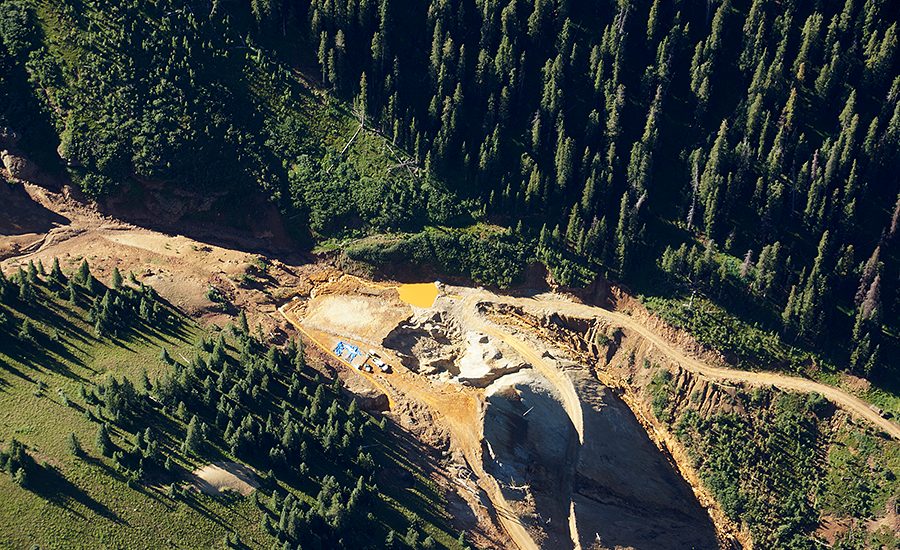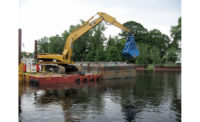The fallout from Colorado’s Gold King Mine spill in August continues to spread. In mid-January, New Mexico state officials served a “notice to sue” to the Environmental Protection Agency and several other parties for their roles in causing the 3-million-gallon deluge that poisoned the Animas and San Juan rivers with acidic mine water.
A prerequisite to filing suit under the federal Resource Conservation and Recovery Act (RCRA), the notice is accompanied by a 90-day waiting period to facilitate a resolution without a trial.
The New Mexico Dept. of the Environment alleges that groundwater was seeping into the mine for decades and that the EPA knew the mine water was acidic, informed no one and then, through its negligence, caused the mine blowout. The EPA “caused an unprecedented disaster that may affect our state for years to come; they must take responsibility,” said Ryan Flynn, New Mexico’s DEP secretary, in a statement.
At the Gold King site in August, a federal crew dug into a retention-pool barrier and unleashed the toxic plume of acidic mine sludge. In a technical report last October, the U.S. Bureau of Reclamation said EPA’s critical mistake was to not “bore into the mine from above to determine the level of the mine pool prior to excavating backfill at the portal.”
The bigger problem was that the EPA did not demonstrate adequate geological and hydraulic engineering expertise for its work at Gold King, the bureau said, adding, “Current [abandoned-mine] guidelines and manuals provide detailed guidance on environmental sampling, waste characterization, and water treatment, with little appreciation for the engineering complexity [abandoned-mine] projects often require.”
There was no evidence of an ongoing monitoring program to ensure that structures built to close mine portals continued to perform as intended, the bureau added.
Over the past few weeks, the EPA has started finger-pointing, says Todd Hennis, president of San Juan Corp., which owns the Gold King Mine and also is named in the RCRA notice to sue.
As the law gives the EPA the authority to identify “potentially responsible parties” after severe environmental disasters, the agency, in this case, could hold mine owners responsible for cleanup costs.
“But my company has never done any mining work at the site,” Hennis says. “[The EPA] wanted to do it on their own. None of this would have happened if EPA would have learned some of the lessons of the past and engaged some of the resources and expertise in the area.”
Hennis said that, for years, he warned officials that overflow from an adjacent mine owned by one of the world’s largest gold companies, Canada’s Kinross Gold, was causing the toxic buildup in the Gold King mine. “[Kinross has] done nothing as a caretaker of this mine, and EPA didn’t know what they were doing,” he says.
Kinross, like San Juan Corp., is named in the notice to sue, but specifics regarding the firms’ liability have not been released.
The catastrophe highlights one of the major risks EPA faces as a manager of public land, said Jessica Goad, spokeswoman for Center for Western Priorities, a Colorado public policy group. “America’s mining legacy left tens of thousands of toxic abandoned mines scattered across the West, and nearly 40% of the West’s headwater watersheds have been polluted by mining,” she said.
Political adversaries claim the EPA’s handling of the spill and its overall stewardship of mine remediation demonstrate that federal lands should be managed by state authorities. “This mistake and lack of transparency by the federal EPA is yet another egregious example of why states and local entities are much better managers of our own land and natural resources,” said Sen. Margaret Dayton (R-Utah) in a statement.
However, Goad says this approach would be a mistake. “Should state land takeover efforts move forward, 13 western states would be saddled with between $9.6 billion and $21 billion in costs of cleaning up the approximately 100,000 abandoned mines that exist on public lands today.”



Post a comment to this article
Report Abusive Comment